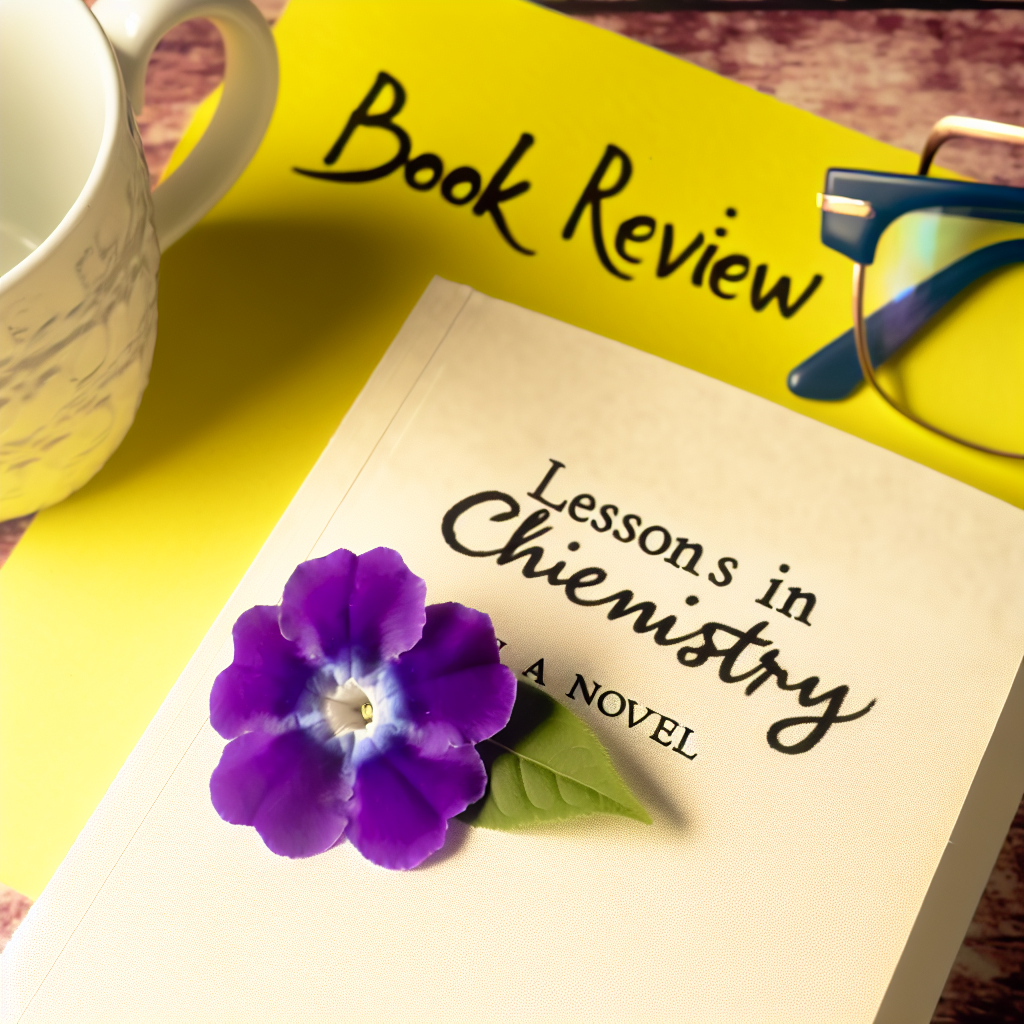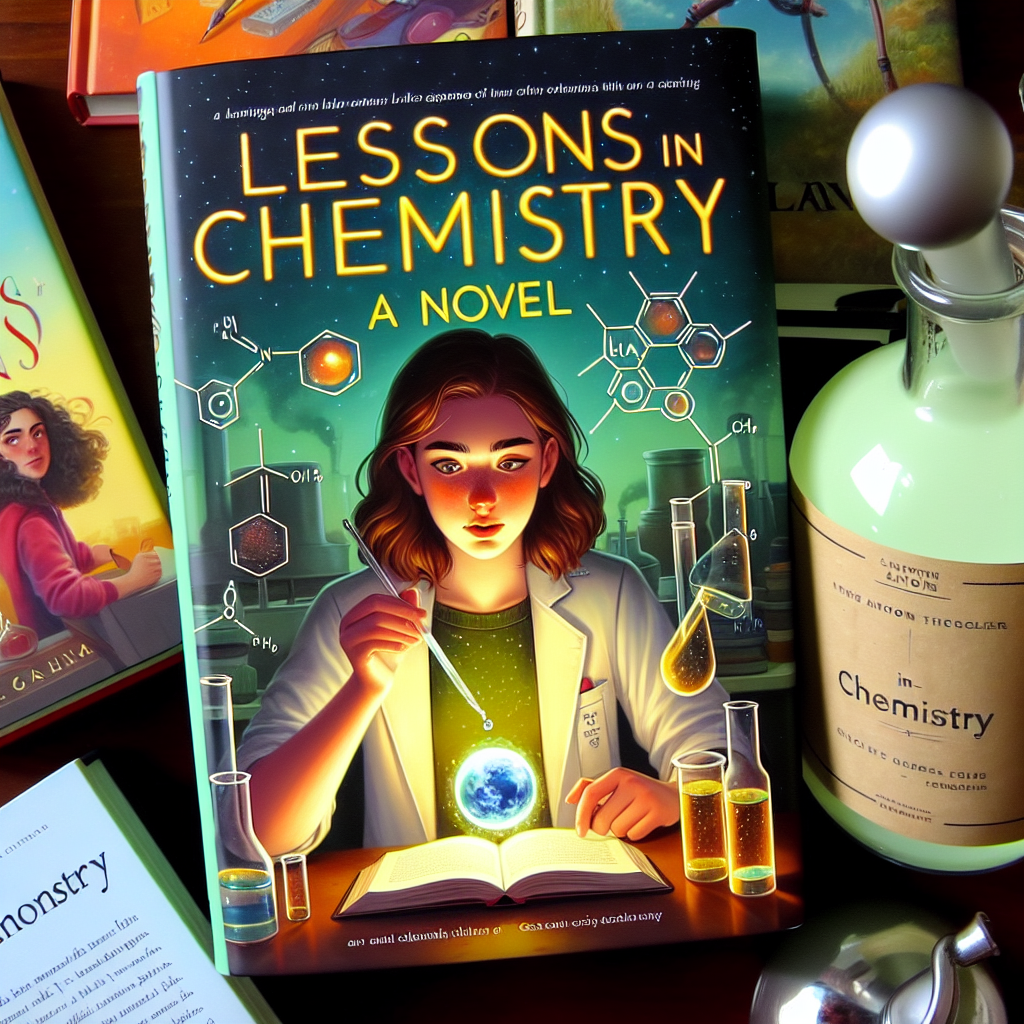As an Amazon Associate I earn from qualifying purchases.
In a landscape teeming with predictable narratives and formulaic plots, “Lessons in Chemistry: A Novel” by Bonnie Garmus emerges as a refreshing antidote, captivating readers with its originality and deft storytelling. Set against the backdrop of the 1960s—a tumultuous era for gender dynamics—the novel masterfully intertwines the rigors of scientific discovery with the complexities of human relationships. At its core is Elizabeth Zott, a fiercely intelligent chemist whose ambition and passion for science are constantly thwarted by a society entrenched in patriarchal norms. Garmus utilizes Zott's journey to critique the systemic barriers that stifle women's progress, both in academia and beyond, illuminating an often-overlooked chapter in history.
What makes this novel particularly significant is its dual capacity to educate and entertain. Garmus artfully addresses the sexism and discrimination faced by women in STEM fields long before the #MeToo movement brought these conversations into the mainstream. Through Elizabeth’s struggles and triumphs, readers gain insight into the relentless perseverance required to break free from societal constraints. Moreover, Garmus's nuanced characters and engaging narrative structure manage to convey complex scientific principles without alienating readers unfamiliar with the intricacies of chemistry. The novel thus serves as both a poignant reminder of past injustices and an inspiring testament to the power of resilience and intellectual curiosity.
Lessons in Chemistry: A Novel
## Plot
“Lessons in Chemistry: A Novel” revolves around the life of Elizabeth Zott in the early 1960s, a female scientist whose career takes an unexpected turn. Elizabeth is dismissed from her research lab due to the gender biases prevailing in society. Consequently, she finds herself as the reluctant star of a cooking show, “Supper at Six”. Despite this unconventional career move, she manages to infuse her passion for chemistry into the program, teaching housewives not only about cooking but also about science and empowerment. Her unique blend of cooking and chemistry helps her challenge societal norms and educates her audience in ways they had not anticipated. Subplots involving her relationships, professional challenges, and personal growth weave seamlessly into the core narrative, creating a multi-layered and engaging plot.
## Characters
Elizabeth Zott’s character is brilliantly crafted with depth and complexity. As a scientifically minded and headstrong woman, she defies the stereotypical roles assigned to women in the early 1960s. Beyond Elizabeth, other characters such as Calvin Evans, her love interest and fellow scientist, add richness to the story. Calvin’s unwavering support for Elizabeth highlights issues of gender and professional equality. Madeline, Elizabeth's daughter, embodies the future generation’s hope, curiosity, and resilience. Other supporting characters, like the producers and crew of “Supper at Six”, serve to juxtapose societal expectations against Elizabeth's progressive ideas. Each character contributes significantly to the narrative, offering varied perspectives and conflicts that drive the story forward.
## Writing Style
The writing style in “Lessons in Chemistry” is both engaging and accessible. Author Bonnie Garmus uses a mix of humor and poignant moments to tackle serious themes such as gender inequality, professional discrimination, and personal loss. The narrative alternates between lively dialogue and thoughtful exposition, balancing lighter moments with broader social commentary. Garmus’s writing often incorporates scientific terminology and concepts, which are skillfully explained in layman's terms, making them accessible to readers without a scientific background. The prose is clear and crisp, providing vivid descriptions that bring scenes and characters to life, making the book a compelling read.
## Setting
Set in the early 1960s, the novel captures the essence of the time period with detailed settings that reflect societal norms and expectations. The research laboratory where Elizabeth works is portrayed as a male-dominated environment, emphasizing the gender disparities prevalent in the scientific community. The transition from the lab to the television kitchen studio symbolizes Elizabeth’s shift from traditional scientific pursuits to a more public and domestic-facing role. This change in setting also reflects broader societal changes, as it juxtaposes the professional world with domestic life. The suburban backdrop where Elizabeth raises her daughter further adds to the novel's authenticity, capturing the aspirations and struggles of middle-class America during that era.
## Unique Aspects
One of the novel's unique aspects is its blending of cooking with chemistry as a metaphor for empowerment. Elizabeth’s approach to her cooking show, where she explains recipes through chemical reactions, is not only inventive but also serves to break down complex scientific concepts for a general audience. This creative fusion exemplifies how scientific knowledge can be applied to everyday life. Another distinctive feature is the strong feminist undertone that challenges the societal and professional barriers women faced. The novel provides a critique of the gender biases inherent in both the professional world and domestic settings, which adds depth to the story and makes it resonate with contemporary readers.
Similar to Lessons in Chemistry: A Novel Book Review
| Pros | Cons |
|---|---|
|
|
Author Credibility
When considering whether to purchase “Lessons in Chemistry: A Novel,” it's essential to first evaluate the author's credibility. Look into the author's background, previous works, and their expertise in the subject matter. An author with a strong background in science or educational literature may lend more authenticity to the book. Reader reviews and industry accolades can also be indicative of an author's credibility, giving you a clearer picture of what to expect.
Book Reviews and Ratings
Reading book reviews and checking ratings on platforms like Goodreads, Amazon, and professional book review websites is crucial. Pay attention to both professional reviews and reader feedback to get a balanced perspective. Look for common themes in the reviews, such as the book's pacing, character development, and overall impact. High ratings and positive reviews often signal a well-received book, but also consider any constructive criticism noted by reviewers.
Target Audience
Understanding who the book is geared towards can greatly influence your purchase decision. “Lessons in Chemistry: A Novel” is likely aimed at readers interested in women's fiction, science, and educational themes. Assess whether the themes and topics align with your interests or with the interests of the person you're buying for. Knowing the target audience can help you determine the book's relevance to your reading preferences.
Genre and Themes
The genre and underlying themes of a book often play a crucial role in making a purchase decision. If you enjoy novels that weave both educational and narrative elements, “Lessons in Chemistry: A Novel” may be a great fit. Examine how well the book integrates its themes – in this case, scientific principles and personal growth – into the storyline. A well-balanced blend of themes can enhance your reading experience.
Sample Chapters and Excerpts
Reading sample chapters or excerpts can provide valuable insights into the book's writing style, tone, and pacing. Many online bookstores and the book's official website offer free samples. By previewing the content, you can determine whether the author's writing style and the book's flow suit your preferences. This step can help you avoid disappointment and ensure that the book meets your expectations.
Price and Formats
Price is often a consideration when purchasing a book. Compare prices across multiple platforms, including online retailers and local bookstores. Additionally, consider the format options available – hardcover, paperback, e-book, or audiobook. Each format has its pros and cons, such as cost differences and portability. Ensure that the format you choose fits your budget and reading habits.
Book Length
The length of a book can impact your purchase decision, depending on your reading preferences and available time. “Lessons in Chemistry: A Novel” should not be too lengthy to deter casual readers but long enough to provide a comprehensive story. Checking the page count and user reviews regarding the book’s pacing can give you a good sense of whether it fits your criteria.
Edition and Extras
Sometimes, special editions or versions of a book come with added extras such as author interviews, discussion questions, or illustrations. Check to see if there are multiple editions of “Lessons in Chemistry: A Novel” and what additional content they might offer. These extras can enhance your reading experience and provide deeper insights into the book's themes and the author's intent.
Availability
Confirming the book's availability in your region and preferred format is a practical step. Some books may have limited print runs or be out of stock in certain areas. Check the estimated delivery times for physical books and the instant download options for e-books. Ensuring the book is accessible for purchase when you need it is vital for a smooth buying experience.

FAQ
What is the genre of “Lessons in Chemistry: A Novel”?
“Lessons in Chemistry: A Novel” is primarily categorized under historical fiction, with elements of romance and satire. It explores themes of scientific pursuit and feminist ideals set against the backdrop of the 1960s.
Who is the author of “Lessons in Chemistry: A Novel”?
The novel is written by Bonnie Garmus, an author known for her engaging storytelling and well-developed characters.
Is “Lessons in Chemistry: A Novel” suitable for all age groups?
While “Lessons in Chemistry: A Novel” is targeted at adult readers, it may also appeal to mature young adults due to its historical context, themes of gender equality, and scientific exploration. However, parents should be aware that it deals with adult themes and language.
What is the main plot or storyline of the book?
The story follows Elizabeth Zott, a chemist in the 1960s who struggles against societal expectations and professional barriers. Her unconventional methods and strong will lead her into unexpected adventures, including hosting a cooking show that subtly educates viewers about science and gender equality.
Does the book focus heavily on scientific details?
While the story involves scientific themes and elements, it is written in a way that is accessible to readers without a strong background in science. The focus remains on character development and the social issues of the time.
How are the characters developed in the book?
Characters in “Lessons in Chemistry: A Novel” are richly developed, with complex personalities and motivations. Elizabeth Zott, in particular, evolves throughout the story, offering a deep and relatable portrayal of a woman pushing against the constraints of her era.
Is “Lessons in Chemistry: A Novel” part of a series?
No, “Lessons in Chemistry: A Novel” is a standalone book and is not part of a series. Readers can enjoy the full story and its conclusion within this single novel.
Has the book received any literary awards or recognition?
Yes, “Lessons in Chemistry: A Novel” has been praised by critics and readers alike for its engaging narrative and thought-provoking themes, earning various literary accolades and a strong reader following.
Would you recommend “Lessons in Chemistry: A Novel” for book clubs?
Absolutely. The novel's rich themes, including gender equality, science, and social change, make it an excellent choice for book club discussions. It provides ample material for conversation and debate among members.
Where can I buy “Lessons in Chemistry: A Novel”?
The book is widely available for purchase at major retailers, both online and in physical stores. Popular options include Amazon, Barnes & Noble, and local independent bookstores.
In conclusion, “Lessons in Chemistry: A Novel” emerges as a compelling and invaluable choice for readers looking to delve into a story that masterfully melds humor, romance, and social commentary. Its protagonist, Elizabeth Zott, offers a refreshing and inspiring take on challenging societal norms, making this book a must-read for those who appreciate strong female leads and thought-provoking narratives. The vivid storytelling and well-developed characters ensure an engaging reading experience, while the subtle infusion of scientific elements adds an educational layer that elevates the novel beyond typical genre boundaries. By choosing “Lessons in Chemistry,” readers not only enjoy a richly crafted narrative but also gain insights into perseverance, equality, and the transformative power of knowledge.
Other Lessons in Chemistry: A Novel Book Review buying options
Amazon and the Amazon logo are trademarks of Amazon.com, Inc, or its affiliates.






















































